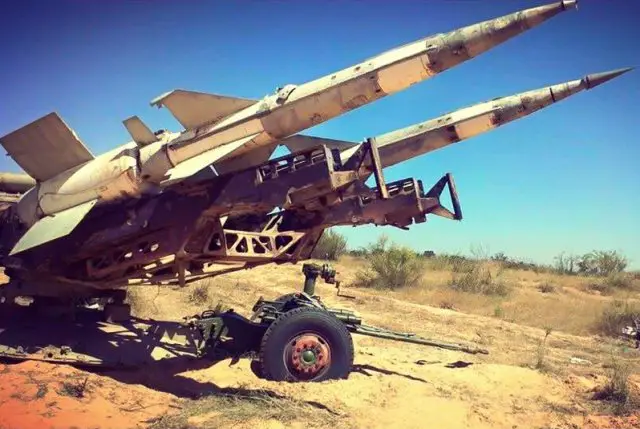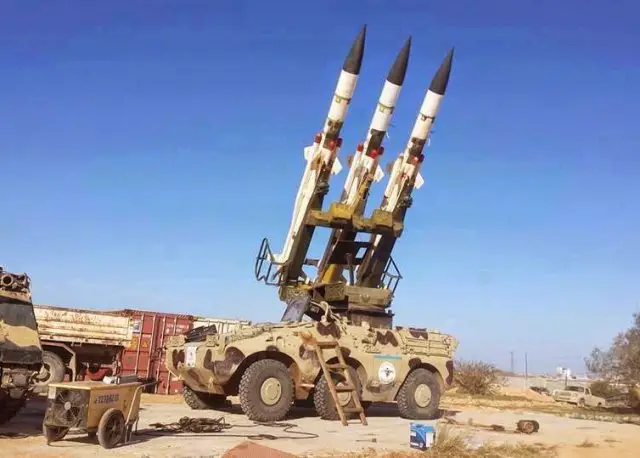|
|
|||
|
Military Defense Industry Technology - Libya surface-to-surface missiles
|
|||
|
|
|||
|
Libya Dawn coalition uses Russian SA-3 and SA-6 SAM as surface-to-surface missile
|
|||
|
After the conversions of SA-3 (S-125) to surface-to-surface missiles, Libya Dawn coalition surprises the world again with the installation of Russian SA-6 Gainful (2K12 Kub) SAM on a Italian made Puma 6x6 Armored Personnel Carrier.
|
|||
|
|
|||
 Russian made SA-3 Goa (S-125 Neva) are used as surface-to-surface missiles |
|||
|
|
|||
| The Puma had been part of a batch of at least twenty vehicles donated by Italy to the fledgling Libyan National Army back in 2013, but has now been modified for a wholely different role by its new owners. Unlike the S-125 conversion, the missiles have no apparant signs of modifications, although they will certainly be extremely ineffective when used with the original 59 kilograms heavy high-explosive fragmentational (HE-frag) warhead. Moreover, the missiles might not function at all if the original fuse and guidance system is not replaced by a more suitable alternative. | |||
|
|
|||
 Russian made SA-6 Gainful (2K12 Kub) mounted on an Italian made Puma 6x6 APC Russian made SA-6 Gainful (2K12 Kub) mounted on an Italian made Puma 6x6 APC |
|||
|
|
|||
|
Iraq was the first to experiment with the idea of converting SAMs to the surface-to-surface role. Apart from converting several S-125s for this role, Iraq too modified 3M9 missiles from the 2K12 to serve as surface-to-surface missiles under the name of Kasir. Initiated in early 1989, the goal was to achieve a range of 100 kilometres.
The 2K12's 3M9 missiles proved, much like the S-125's V-600s, to be extremely difficult to modify for the surface-to-surface role. In addition to the problems encountered with the S-125 conversion such as the inability to modify the solid propellant booster of the missiles to achieve the desired range, the Iraqi engineers encountered several problems with modifying the 3M9's more complex guidance and control systems.
Despite this, two test flights took place throughout 1989, reaching a dissappointing range of 62 kilometres with a far too large circular error probable (CEP), resulting in the termination of the project by the end of 1989.
Libya Dawn's conversion of 2K12 SAMs will undoubtedly not fear any better than its Iraqi counterpart, and might only be of use when fired at a large target within direct sight of the operators. They do represent the increasing number of projects in Libya however, and are certain not to be the last.
|
|||
Libya Dawn coalition uses Russian SA-3 and SA-6 SAM as surface-to-surface missile 2904154
- Posted On














